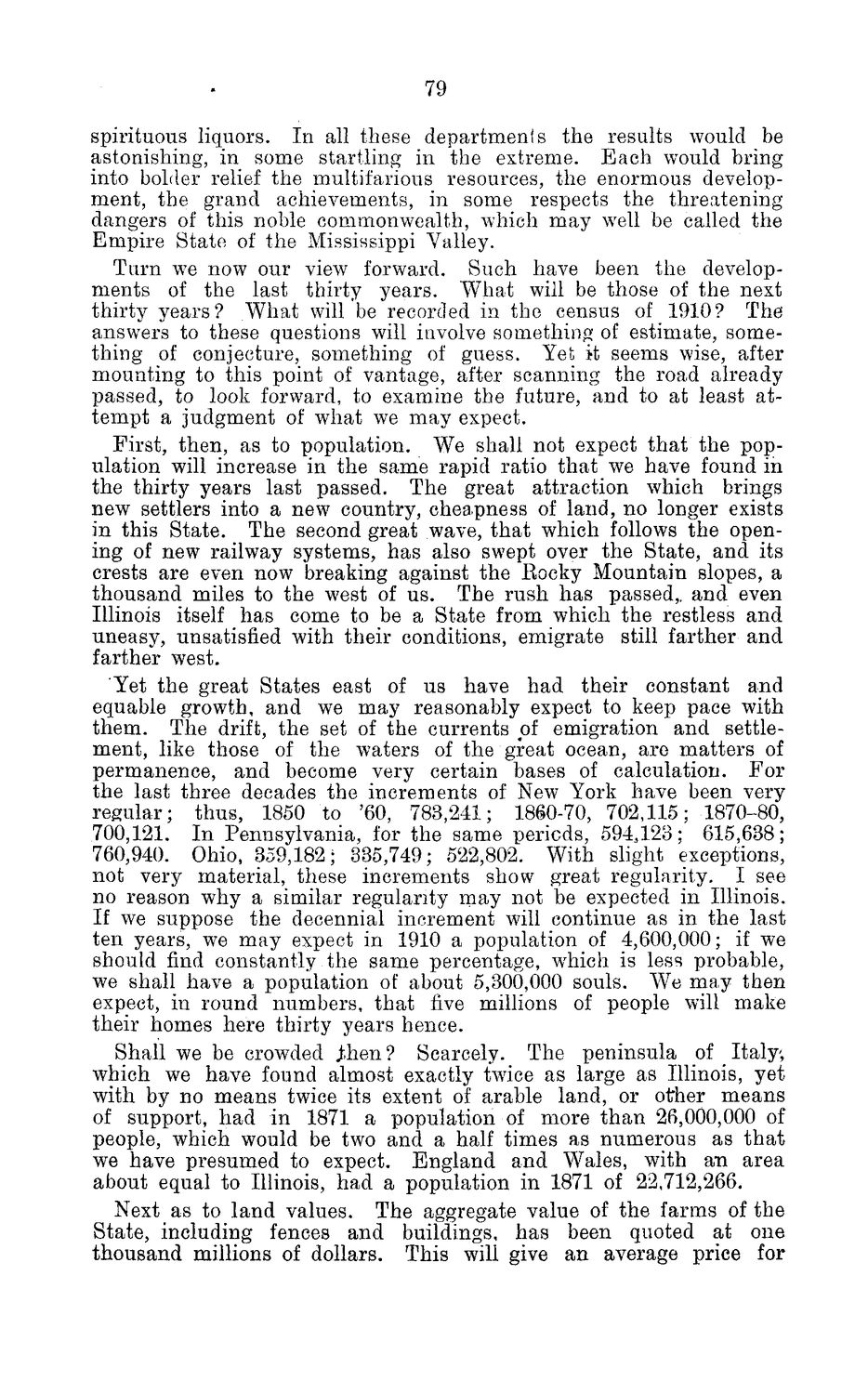| |
| |
Caption: Board of Trustees Minutes - 1884
This is a reduced-resolution page image for fast online browsing.

EXTRACTED TEXT FROM PAGE:
79 spirituous liquors. In all these departments the results would be astonishing, in some startling in the extreme. Each would bring into bolder relief the multifarious resources, the enormous development, the grand achievements, in some respects the threateningdangers of this noble commonwealth, which may well be called the Empire State of the Mississippi Valley. Turn we now our view forward. Such have been the developments of the last thirty years. "What will be those of the next thirty years? What will be recorded in the census of 1910? The answers to these questions will involve something of estimate, something of conjecture, something of guess. Yet it seems wise, after mounting to this point of vantage, after scanning the road already passed, to look forward, to examine the future, and to at least attempt a judgment of what we may expect. First, then, as to population. We shall not expect that the population will increase in the same rapid ratio that we have found in the thirty years last passed. The great attraction which brings new settlers into a new country, cheapness of land, no longer exists in this State. The second great wave, that which follows the opening of new railway systems, has also swept over the State, and its crests are even now breaking against the Eocky Mountain slopes, a thousand miles to the west of us. The rush has passed,, and even Illinois itself has come to be a State from which the restless and uneasy, unsatisfied with their conditions, emigrate still farther and farther west. Yet the great States east of us have had their constant and equable growth, and we may reasonably expect to keep pace with them. The drift, the set of the currents of emigration and settlement, like those of the waters of the great ocean, are matters of permanence, and become very certain bases of calculation. For the last three decades the increments of New York have been very regular; thus, 1850 to '60, 783,241; 1860-70, 702,115; 1870-80, 700,121. In Pennsylvania, for the same periods, 594,123; 615,638; 760,940. Ohio, 359,182; 335,749; 522,802. With slight exceptions, not very material, these increments show great regularity. I see no reason why a similar regularity may not be expected in Illinois. If we suppose the decennial increment will continue as in the last ten years, we may expect in 1910 a population of 4,600,000; if we should find constantly the same percentage, wirich is less probable, we shall have a population of about 5,300,000 souls. We may then expect, in round numbers, that five millions of people will make their homes here thirty years hence. Shall we be crowded j-,hen? Scarcely. The peninsula of Italy; which we have found almost exactly twice as large as Illinois, yet with by no means twice its extent of arable land, or other means of support, had in 1871 a population of more than 26,000,000 of people, which would be two and a half times as numerous as that we have presumed to expect. England and Wales, with an area about equal to Illinois, had a population in 1871 of 22,712,266. Next as to land values. The aggregate value of the farms of the State, including fences and buildings, has been quoted at one thousand millions of dollars. This will give an average price for
| |